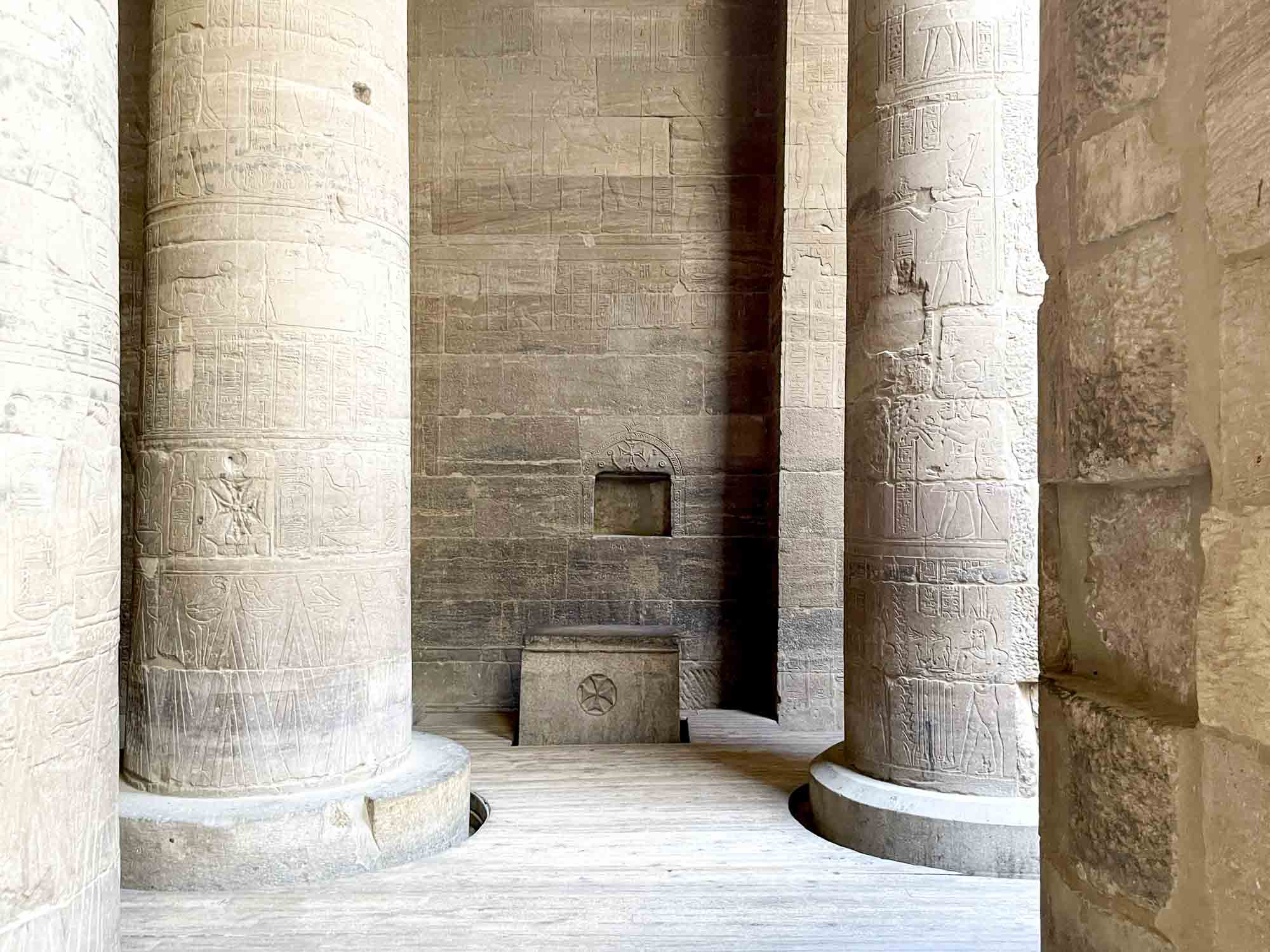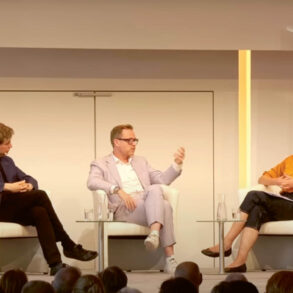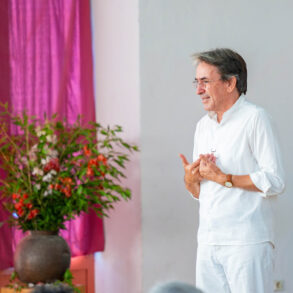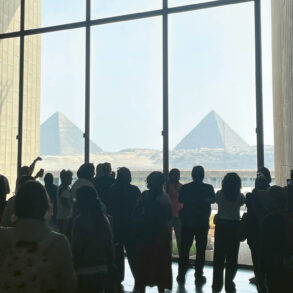Every temple is a bridge, a bridge between the human being and God, humanity and divinity. In the case of the Temple of Isis, this bridging applies on many levels. As a magnet for tourists, it builds a bridge from antiquity to the present day.
The “Pearl of the Nile” was the name given by many travellers to the Temple of Isis on the island of Philae in the very south of Egypt. But at the beginning of the twentieth century, the first Nile dam, which was built between 1898 and 1902, flooded the temple. Under the leadership of UNESCO, 50 nations gathered expertise and funding to save the temple in the 1970s.
The Pearl of the Nile became the largest jigsaw puzzle on earth, as the contracted construction companies sawed the temple complex into 37,363 individual stone blocks weighing between 2 and 25 tonnes and rebuilt it on the higher neighbouring island of Agilkia. To do this, the temple first had to be drained using a dam wall. The island also had to be raised and levelled. The temple thus stands on artificial ground today. One might argue that a temple that has been so dismembered and banished from its original location is no longer the sanctuary it once was. That is, of course, correct, and at the same time this stony relocation, construction, and rebuilding reflects, indeed enhances, something of the spirit of the temple, because deconstruction and rebuilding are part of the programme here, as is the fact that other peoples are involved.
The temple complex is located on the northernmost cataract of the Nile, where rocks and rapids block the river to the south and form a gateway to inner Africa. This makes the temple complex a border place. I recently entered the temple forecourt, where tour groups were gathered every few metres, protected by the shade of the colonnade. As I passed by, I could hear the languages in which the guides described the sanctuary and told the myth of Isis, Osiris, and their son Horus: French, Chinese, English, Dutch and German. There aren’t the ten million visitors who visit the pyramids every year, but there are quite a few here, and they come from all over the world. No matter how many mobile phones are pulled out to capture the face of the cosmic goddess Hathor on the columns or the encounter between god and human on the reliefs, there are deeper reasons that have brought all these visitors to the island. This is evident from the looks on their faces and many a silent nod when the guides, the art historians, explain, narrate, and interpret.
A Landmark in Space and Time
The temple complex is not just a spatial landmark; it is also a threshold in terms of time. Nectanebo I, a pharaoh of the last Egyptian-born dynasty, founded the temple. Its development and extension were then carried out by the Greeks and Romans. The generals of Alexander the Great, the so-called Ptolemies, built here, had them built, and the Greek governor Ptolemy XII stands larger than life on the pylon at the entrance to the temple, sacrificing to the deities Isis and Horus and protecting the country from enemies. In doing so, the Greek follows the Egyptian canon. He did not have a Greek temple built, but he Hellenised the Egyptian architectural style and gave the reliefs corporeality.
This is perhaps not what is called into question today as “cultural appropriation” but rather an appreciation of what the Greeks and Romans encountered in Egypt. They echo the Egyptian myth in Greek and then Roman understanding. Thus, the Ptolemaic temples are an echo, a history book of Egyptian spirituality and make visible what the Egyptians kept silent about. This includes the first complete depiction of the twelve images of the zodiac in the temple of Hathor at Dendera.
The Temple of Isis thus shows the change from the earlier certainty of divine presence to the manifestation of the human personality. Anyone looking for Egyptian spirituality in the reliefs will probably sense that only the echo of an echo can be discerned here. And anyone looking for an expression of the human in the architectural composition, as in the Greek temple, will find little—a temple as a transition.
In the sanctum of the temple complex, where the cultic image was kept, a relief of the image of Isis can be found. It shows her nursing her child, Horus. The relief points to more than just maternal fertility. Isis, as “Dea lactans”, gives the son of the gods heavenly power, according to Egyptologist Jan Assmann. The Temple of Isis thus points to the pre-Christian roots of the Christian conception of Mary’s motherhood. Interesting fact: the Egyptian priesthood maintained the temple service here until the sixth century AD, longer than all other temples in Egypt. This was possible because the Meroites, who lived further south, worshipped the Nubian deity Mandulis as the son of Horus in the temple of Isis and therefore supported the sanctuary economically.
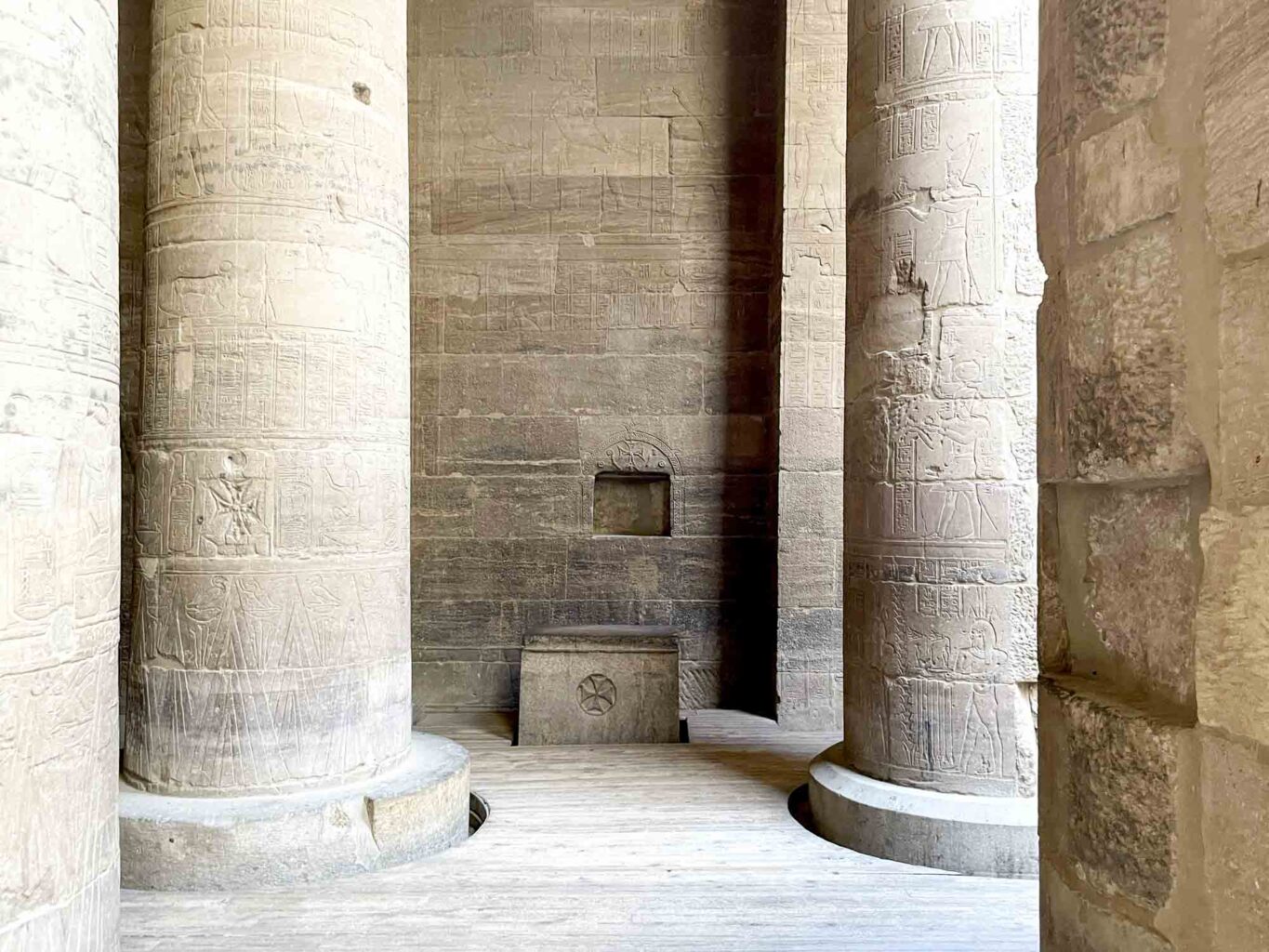
Every temple is a bridge, a bridge between the human being and God, humanity and divinity. In the Temple of Isis, this action of being a bridge applies on many levels. The temple connects ancient Egypt with ancient Nubia. As a temple in late Egypt, it builds a bridge to Greece, Rome, and Christianity. As a magnet for tourists, it builds a bridge from antiquity to the present day.
Selfie with the Pharaoh
Emotions are mixed when you see visitors pointing their mobile phone cameras at themselves and taking selfies with the pharaoh. But instead of a shake of the head, there is a silent nod, because that is how times have changed: today, everyone is called upon, like the ruler once was, to listen to the “secret discourse of the night.” While the aim then was to bring heavenly will to earth, the aim today is to make earthly will heavenly. The temple is a bridge for this too.
Translation Christian von Arnim

